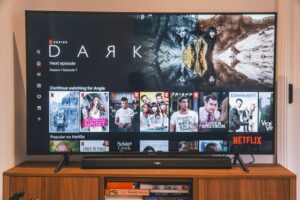The very famous and celebrated Media Strategist and Film Advisor Mr. Hirav Shah has been talking about various industries off late as people from different sectors are wanting to get his opinion on how and when their businesses will flourish and grow and what are the steps to be taken to see massive profits. Hirav Shah as everyone knows is making India and Indians proud on a global platform with his unique mix of business strategies combined with astrology to help entrepreneurs all over the world to maximize their full potential and achieve the desired results in a shorter span of time.
Recently he was asked if the advent of OTT platforms will make Cable TV and DTH go extinct.
Speaking on OTT vs DTH, Hirav Shah says, “With the advent of streaming services, over-the-top or OTT platforms are touted to be the future of the Indian Media & Entertainment industry. With their diverse content and growing audience, the digital platforms are anticipated to be the new normal for movie buffs. Reports suggest that the digital streaming platforms overtook film entertainment to rank the third-largest Indian Media & Entertainment sector in 2019.”
He adds, “COVID19 has further propelled the growth of a segment that was already booming. The closure of cinema halls has led to the emergence of OTT as the new big screen. However, the charm and experience of big screens for Indians will always remain, and they will return to the 70mm experience as soon as an accepted cure is out and things trickle back to normalcy. Nonetheless, the unprecedented situation has led to a complete overhaul of the ever-evolving dynamics of OTT business in India.”
Media Strategist Hirav Shah has also observed looking at the trends that disruptive OTT platforms are giving tough competition to the traditional DTH operators possibly because of its convenience, on-demand video service, and affordable mobile data prices.
Film Advisor cum Astro Strategist Hirav Shah also observes that the DTH industry has reported a drop of almost 3 million subscribers. Cable TV is facing a similar situation. The reason for this drop is being attributed to the strict lockdown that lasted two months and financial stress among the low-income groups.
For DTH and cable operators, it could be a double whammy as on the one hand they are losing subscribers, on the other hand, broadcasters have asked them to waive off or substantially reduce carriage fees. The negotiations on this issue are currently on.
Speaking about OTT platforms Hirav Shah tells, “Hotstar has emerged as a clear preferred online platform to watch content. According to his observations, 41% of the entertainment craving folks said they prefer to watch Disney owned Hotstar, followed by Amazon Prime Video at 26% and Netflix at 9%.”
85% of the respondents said they have watched content at least once on the top OTT platforms in India (Hotstar, Amazon Prime, Netflix, Voot, SonyLiv, Zee5) in the last six months. 15% responded not consuming any content on the OTT platforms.
69% of the respondents paid to watch content on OTT platforms indicating the market (consumer) is ready for more premium services provided they are priced economically.
Hirav Shah makes an important observation. He says, “The youth of today seems to find the content provided by traditional “TV channels” not to their liking. The shows aired do not fit into their mold of entertainment, and for them, these channels have failed to deliver quality content.
The OTT platforms, on the other hand, provide shows and movies that are seemingly more radical, thought-provoking, and relatable for the current generation. Consequently, individuals are beginning to change over to these streaming platforms with many unsubscribing from their DTH suppliers. In the wake of this situation, some DTH suppliers have dispatched their devoted platforms, which empower clients to get all OTT platforms in a single spot.
Currently, a large share of content on OTT revolves around stories that resonate closer to reality. About two decades ago, stories set abroad used to attract eyeballs. But if one looks at the content being streamed for the past three to four years, it becomes evident that it is mostly based out of small towns and cities of India.
Stories written around places such as Kanpur, Bhopal, Agra, and Kota have attracted viewers because they want to explore the characters’ actions that reflect reality.
OTT emerged as personal viewing time, and it is this personal time that the consumer wants to utilize to watch the real stuff, even if it is too dark. It is this art of storytelling that has and will shape the content dynamics of the OTT world. The super success of Mirzapur Series, Sacred Games, and Asur is a testimony to this fact. Thus, the OTT content lies somewhere between TV and films.”
To wrap it up, Media Strategist and Film Advisor Hirav Shah says, “The Indian market is far from attaining saturation when it comes to entertainment.
Rising user base and digital advertisement indicate a bright future for this sector. Consistent growth over recent years cements the notion that streaming platforms spell out more than just a passing flirtation for Indian consumers who are continually looking to satiate their appetite for good-quality cinema.”























